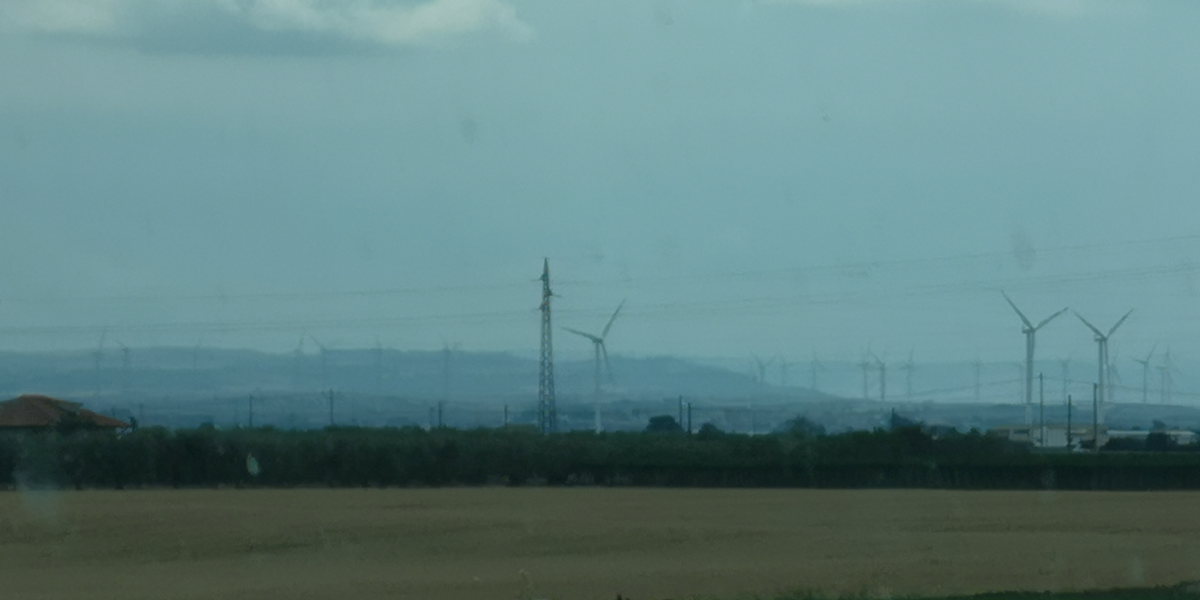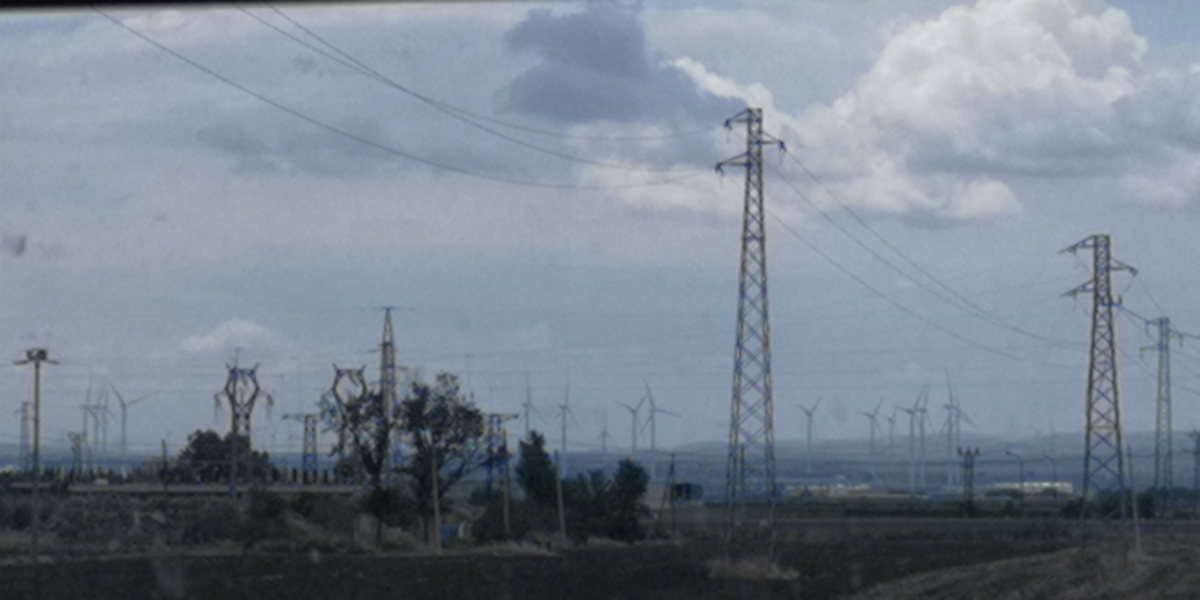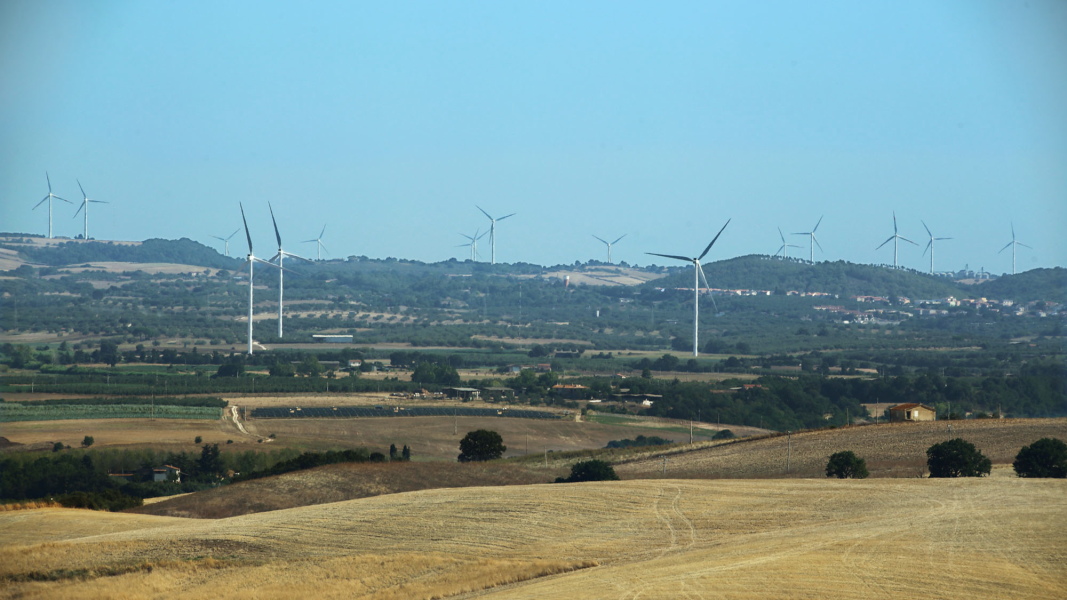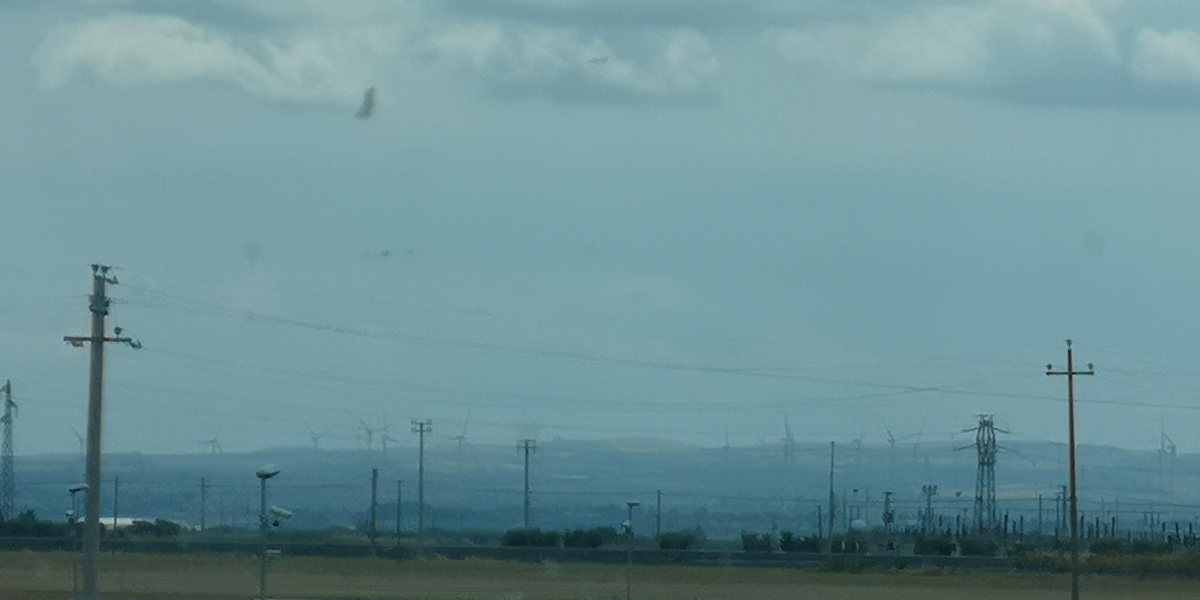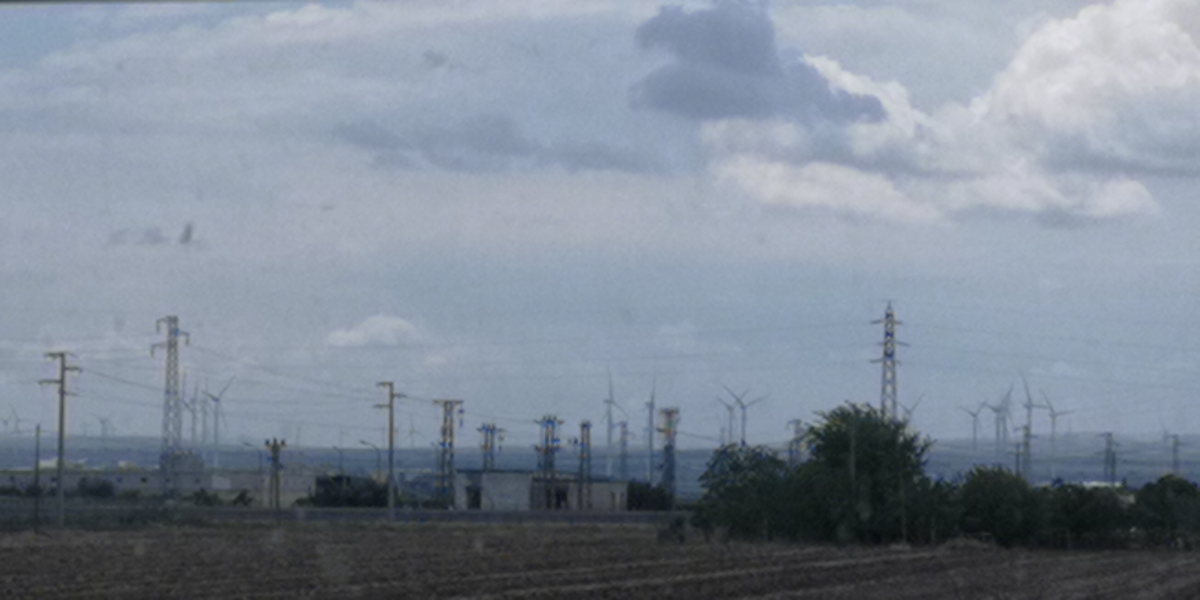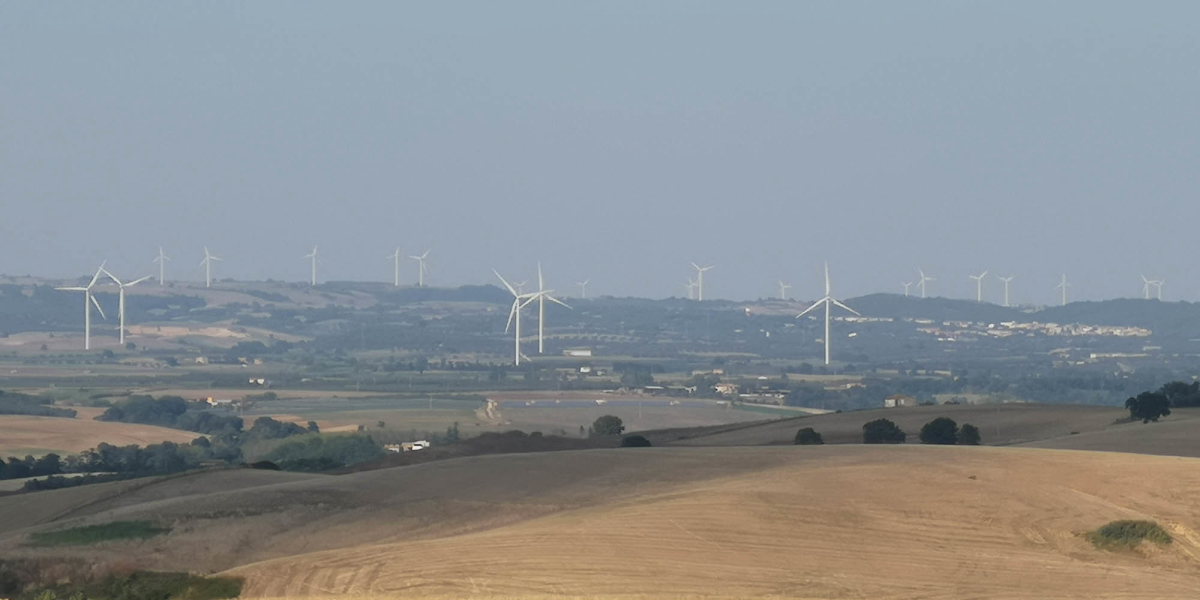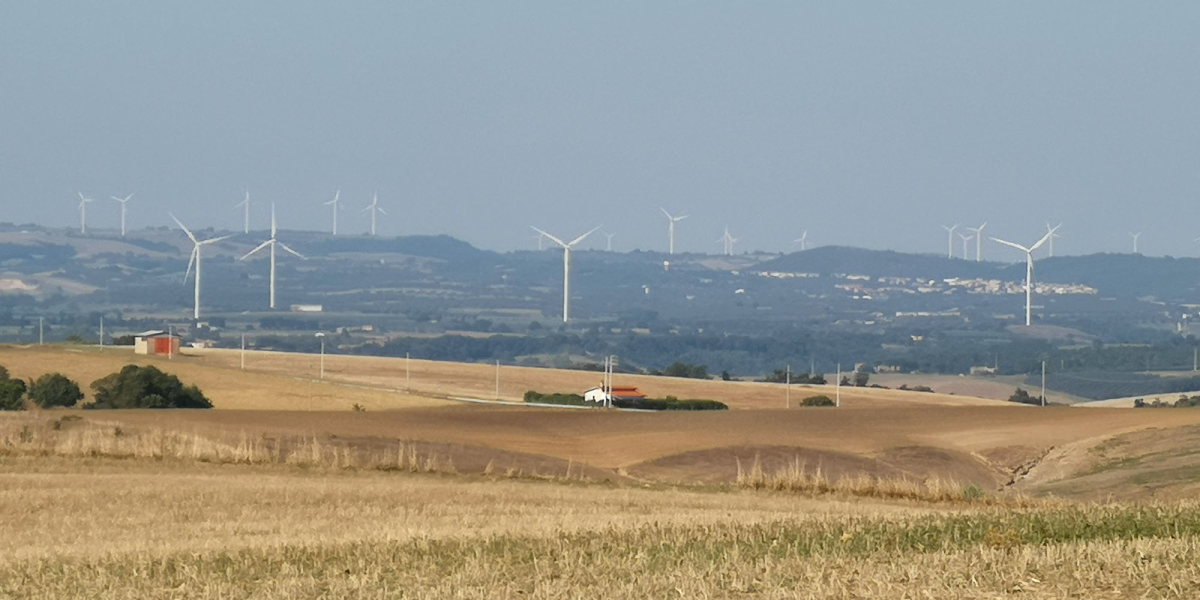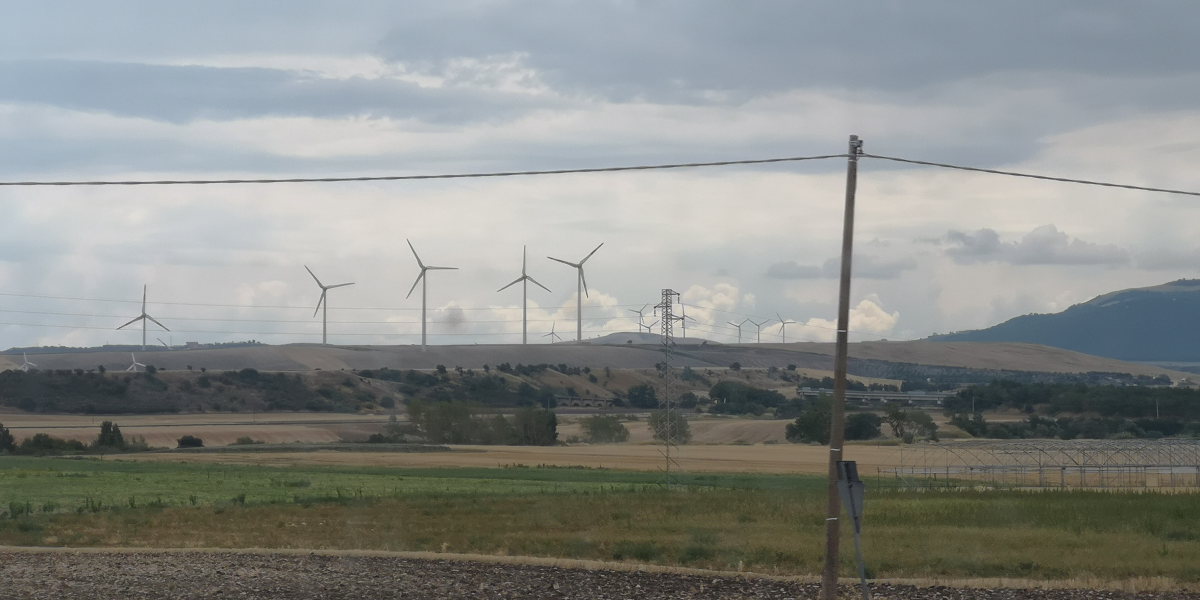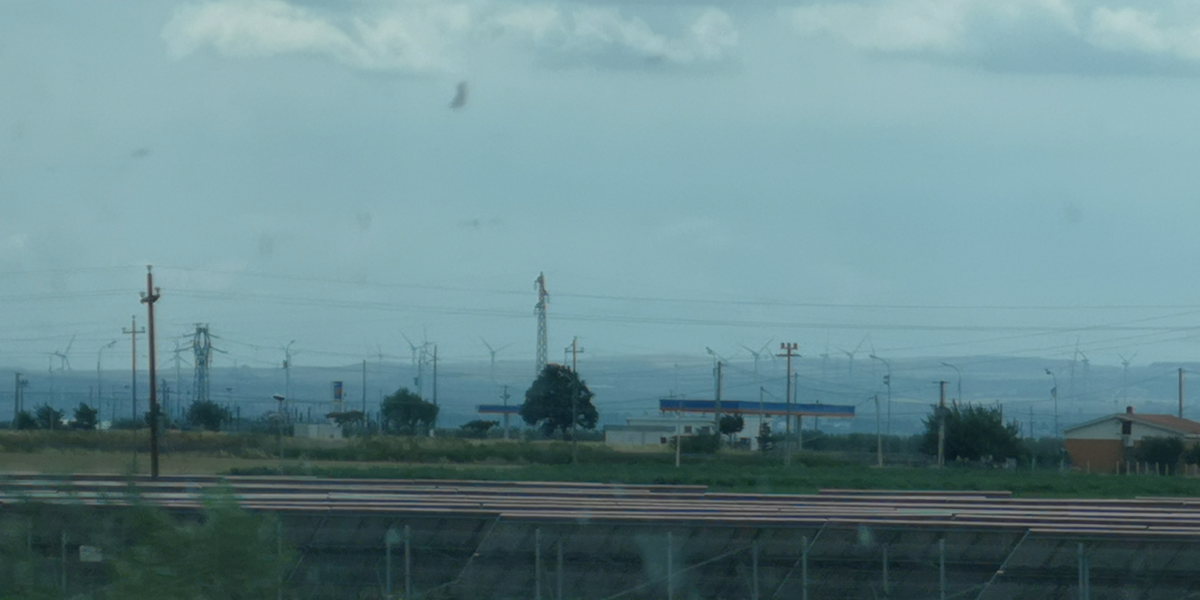Interazioni con clima
LINK CV501
Energie rinnovabili, “l’esperimento della Germania è finito”: Shellenberger spiega perchè eolico e solare sono “un fallimento totale”
https://www.meteoweb.eu/2021/08/energie-rinnovabili-lesperimento-della-germania-e-finito/1713363/?fbclid=IwAR1vkU0Zv6d3wkkk9Q_WwLt5FLMRisfRhTQNp4IkII4-RETJtlzmXHEtA-4
LINK CV502
The influence of large-scale wind power on global climate
LINK CV502
This research suggests that not only will wind farms require
more land area to hit the proposed renewable energy
targets but also, at such large scale, would become an active player
in the climate system.
Then, they covered one third of the continental U.S. with enough
wind turbines to meet present-day U.S. electricity demand. The
researchers found this scenario would warm the surface
temperature of the continental U.S. by 0.24 degrees Celsius
LINK CV503
Large-scale wind power would require more land and cause more environmental impact than previously thought
https://www.seas.harvard.edu/news/2018/10/large-scale-wind-power-would-require-more-land-and-cause-more-environmental-impact?fbclid=IwAR2tMZ-KzJKfNPzd6jlkX1RlowUYGgXBI6Ro_1He4ZmGeyjxnSX-vm2Ltfk
Disturbo visivo / paesaggistico (EV 1000)
LINKEV1001
We found that the physical attributes of the landscape and wind turbines influenced the respondents’ reactions far more than socio-demographic and attitudinal factors. One of the most important results of our study is the sensitivity of respondents to the placement of wind turbines in landscapes of high aesthetic quality, and, on the other hand, a relatively high level of acceptance of these structures in unattractive landscapes. Wind turbines also receive better acceptance if the number of turbines in a landscape is limited, and if the structures are kept away from observation points, such as settlements, transportation infrastructure and viewpoints.
https://www.sciencedirect.com/science/article/abs/pii/S0306261911006969
Link EV1002
estimates are made for the probability of turbine detection, recognition, and visual impact at distances up to 30 km.
https://journals.sagepub.com/doi/abs/10.1068/b12854
Link EV1003
An important finding is that the landscape with the highest aesthetic quality initially was evaluated to be the absolute worst after the addition of WTs and vice versa. strong public opposition to locating WTs in aesthetically valuable landscapes and their greater acceptance in lessattractive landscapes. Vestas V90, height 105 m, rotor diameter 90 m
https://www.sciencedirect.com/science/article/abs/pii/S030626191500522X
Link EV1004
Wind turbines are highly visible objects
https://www.sciencedirect.com/science/article/abs/pii/S0272494408000224
Link EV1005
Socioeconomic impacts of wind farm development: a case study of Weatherford, Oklahoma
https://link.springer.com/article/10.1186/2192-0567-3-2
Salute e rumore (ES 1100)
LINK ES1100
Decision (2010) of an Ontario Environmental Review Tribunal
stated that “wind turbines can cause harm to humans.” The
Tribunal heard testimony under oath from 26 expert witnesses,
some of whom were from the international community. This
case has successfully shown that the debate should not be
simplified to one about whether wind turbines can cause harm
to humans. The evidence presented to the Tribunal
demonstrates that they can, if facilities are placed too close to
residents. The debate has now evolved to one of degree. 1
LINK ES1101
Wind turbines produce sound that is capable of disturbing
local residents and is reported to cause annoyance, sleep
disturbance, and other health-related impacts. An acoustical
study was conducted to investigate the presence of infrasonic
and low-frequency noise emissions from wind turbines located
in Falmouth, Massachusetts, USA. During the study, the
investigating acousticians experienced adverse health
effects consistent with those reported by some Falmouth
residents. The authors conclude that wind turbine acoustic
energy was found to be greater than or uniquely distinguishable
from the ambient background levels and capable of exceeding
human detection thresholds. All peer-reviewed studies
captured in our review found an association between wind
turbines and human distress. These studies had levels of
evidence of four and five.
http://wiseenergy.org/Energy/Health/Summary_references_wind_turbines_and_health_April_2015.pdf
LINK ES1101b
Many people living within 2 km (1.25 miles) of these
spinning giants get sick.
https://www.windturbinesyndrome.com/wind-turbine-syndrome/
LINK ES1102
farm ILFN was found to exceed the audibility threshold at
distances up to 4 km from the wind farm and to undergo
large variations in magnitude with time.
https://www.sciencedirect.com/science/article/abs/pii/S0022460X16001176
LINK ES1103
There is some evidence of symptoms in patients exposed
to wind turbine noise. The effects of infrasound require further
investigation.
https://www.researchgate.net/publication/234695847_Wind_turbine_syndrome_Fact_or_fiction
LINK ES1104
Assessing the effects of wind turbines on human health is an emerging
field, as demonstrated by the limited number of peer-reviewed articles
published since 2003. Conducting further research into the effects of wind
turbines (and environmental change) on human health, emotional and
physical, as well as the effect of public consultation with community groups
in reducing pre-construction anxiety, is warranted. Such an undertaking
should be initiated prior to public announcement of a project, and could
involve baseline community health and attitude surveys, baseline noise and
infrasound monitoring, observation and questionnaires administered to
public during the siting and assessment process, noise modeling and then
post-construction follow-up on all of the aforementioned aspects.
Regardless it would be imperative to ensure robust study design and a clear
statement of purpose prior to study initiation.
https://ehjournal.biomedcentral.com/articles/10.1186/1476-069X-10-78
LINK ES1105
August 9, 2008 This report documents a consistent, often debilitating complex of
symptoms experienced by adults and children while living near large (1.5-3 MW)
industrial wind turbines A minimum setback of 2 km (1¼ mi) is
proposed to offer interim protection while research is ongoing
LINK ES1106
On the biological plausibility of Wind Turbine Syndrome
This review discusses whether it is biologically plausible for the turbine
noise to stimulate the vestibular parts of the inner ear and, by extension,
cause Wind Turbine Syndrome.
https://www.tandfonline.com/doi/full/10.1080/09603123.2014.963034
LINK ES1107
However, discomfort and suffering should always be
addressed and taken seriously into account by decision-makers
and public health officials. The distribution of economic and
health-related advantages and inconveniences should be
perceived as being fair. This article concludes with a 9-point list
of recommendations for the development of wind power in a
context favourable to health.
LINK ES1108
We recommend that government regulators advise the public of potential risks of exposure and
establish limits that incorporate all sources of radio/electromagnetic energy, including wind
turbines. Until these limits are established, governments should take precautionary and proactive
measures to protect public health, with additional attention given to vulnerable population groups
such as children and the older adults. (Altern Ther Health Med. 2019;25(3):32-38.)
LINK ES 1109
The risk of harm to human health associated with radio/electromagnetic energy exposure is
debated globally. Physicians and health practitioners may be presented with increasing
numbers of patients with multisystem complaints, which may be initially confusing. Some
residents living in proximity to wind energy facilities report harm they associate with
exposure to radio/electromagnetic energy. Although authorities, physicians, and
researchers express concerns regarding exposure to radio/electromagnetic energy in
general, research specific to wind turbines is limited. Current regulations may be limited in
scope and not include all devices that emit and/or utilize radio/electromagnetic energy. We
recommend that government regulators advise the public of potential risks of exposure and
establish limits that incorporate all sources of radio/electromagnetic energy, including wind
turbines. Until these limits are established, governments should take precautionary and
proactive measures to protect public health, with additional attention given to vulnerable
population groups such as children and the older adults.
LINK ES1110
Wind turbines with inadequate setbacks can adversely impact public health both directly from
physical risk and indirectly by irritation from loss of safe use of property. Physical public safety
setbacks are separate from larger setbacks required to prevent irritation from noise and other
stressors, particularly when applied to areas of learning, rest and recuperation.
The challenge was demonstrated of comparing the risk of death for an activity that the majority
of Ontario residents take part in, of driving a motor vehicle, to the risk of death to an individual
who may happen to be in the vicinity of a wind turbine when a failure occurs. For the first, the
expectation is that 1 in 20,000 drivers are killed per year, a frequency of 5.0 x 10-5 deaths per
year for an activity voluntarily selected by choice of the drivers. For the second, the expectation
for the individual in the vicinity of the failure is 5.0 x 10-4 deaths per year, a factor 10 times
higher, yet for an initiator that is an involuntary risk. Examples were given that we protect
vulnerable children, at risk of an anaphylactic death from consuming peanut products where the
risk is 2.5 x 10-6 deaths per year.
That raises a different legal question about being deprived of the enjoyment of use of property
for those living near wind turbines.
https://openaccesspub.org/jec/article/888
LINK ES1111
CAUSE AND CONTRIBUTING FACTORS OF FAILURE OF GEARED WIND TURBINES
https://sites.google.com/site/metropolitanforensics/cause-and-contributing-factors-of-failure-ofwind-turbines
LINK ES1112
Wind Turbine Failures – Tackling current Problems in Failure Data Analysis
https://iopscience.iop.org/article/10.1088/1742-6596/753/7/072027/pdf
Articoli scientifici Consumo di suolo e Frammentazione Habitat
(EH11200)
https://academic.oup.com/bioscience/article/65/3/290/236920
Habitat loss is the leading cause of species extinction and other negative impacts on biodiversity
(Pimm and Raven 2000)
In Europe, the loss of habitat and fragmentation associated with wind energy facilities is considered
a greater impact than are collision-related fatalities on bird populations (Gill et al. 1996).
Articoli scientifici Fotovoltaico
VALORE IMMOBILI (ER1300)
Link ER1301
In “High-Voltage Transmission Lines and Rural, Western Real
Estate Values” published in The Appraisal Journal 2012, Dr.
James A. Chalmers, qualified as an expert witness in over 20
states, found that residential properties near transmission
lines sold for 20-50% less than comparable residential
properties.
Michael McCann, of
https://www.forbes.com/sites/judeclemente/2015/09/23/dowind-turbines-lower-property-values/
LINK ER1302
industrial-scale wind energy turbine projects to the residential
properties,” if they are up to 3.2 km away. They decrease a
property’s value by 35 to 40 per cent
According to the London School of Economics, wind farms
decrease property value by up to 12 per cent if the home is
within a two km radius and can even affect a property’s
value up to 14 km away from the home.
In fact, the Ontario Superior Court ruled in 2013 that
landowners living near large wind farms suffer from lower
property values. That court said it decreased property
values by 22 to 55 per cent.
https://www.wind-watch.org/news/2018/04/04/wind-turbinesaffect-property-values/
LINK ER1303
The estimates indicate that the asking price for properties
whose view was strongly affected by the construction of wind
turbines decreased by about 10–17%. In contrast, properties
with a minor or marginal
LINK ER1304
https://scholar.google.com/scholarhl=it&as_sdt=0%2C5&q=wind+turbine+real+estate+value&btnG=#d=gs_qabs&u=%23p%3DiCc65TeA5eEJ
Danemark: We find that on-shore wind turbines negatively
affect the price of surrounding properties to a distance of
three kilometers.
off-shore wind turbine farms, we do not find a significant effect
of having an off-shore wind farm in view from a property itself
LINK 1305
Niente royalties per i comuni che ospitano rinnovabili…
http://www.ilpianetaterra.it/2016/03/nullita-delle-royalties-aicomuni/?
fbclid=IwAR3c94fpyMXWZGcJXsCasz6ozwNtTC40if6GvFu4R6b737f4kBvSWC6rVk
Articoli scientifici consume di suolo e frammentazione Habitat
(CS1501)
LINK CS 1501
This research suggests that not only will wind farms require
more land area to hit the proposed renewable energy
targets but also, at such large scale, would become an active player
in the climate system.
Then, they covered one third of the continental U.S. with enough
wind turbines to meet present-day U.S. electricity demand. The
researchers found this scenario would warm the surface
temperature of the continental U.S. by 0.24 degrees Celsius
LINK CS1502
Estratti del rapporto IPCC sul consumo di suolo e clima.
http://www.exploretuscia.com/ipcc-rapporto-082018-cambiamentoclimatico-e-suolo/
LINK CS1503
“The direct climate impacts of wind power are instant, while the benefits of
reduced emissions accumulate slowly,” said Keith. “If your perspective is the
next 10 years, wind power actually has — in some respects — more climate
impact than coal or gas. If your perspective is the next thousand years, then
wind power has enormously less climatic impact than coal or gas.
LINK CS1504
Renewables, Policy and Land Use – brief quotes from more than 50 papers
LINK CS1506
It is likely that new power lines (and other tall structures such as wind turbines)
will lead to avoidance of previously suitable habitat and will serve as barriers to
movement. These two factors will likely increase fragmentation in an already
fragmented landscape if wind energy development continues in prairie habitats.
https://conbio.onlinelibrary.wiley.com/doi/abs/10.1111/j.1523-1739.2009.01254.x
LINK MISC1601
This level of degradation reduces a wind farm’s output by 12%
over a twenty year lifetime, increasing the levelised cost of
electricity by 9%

